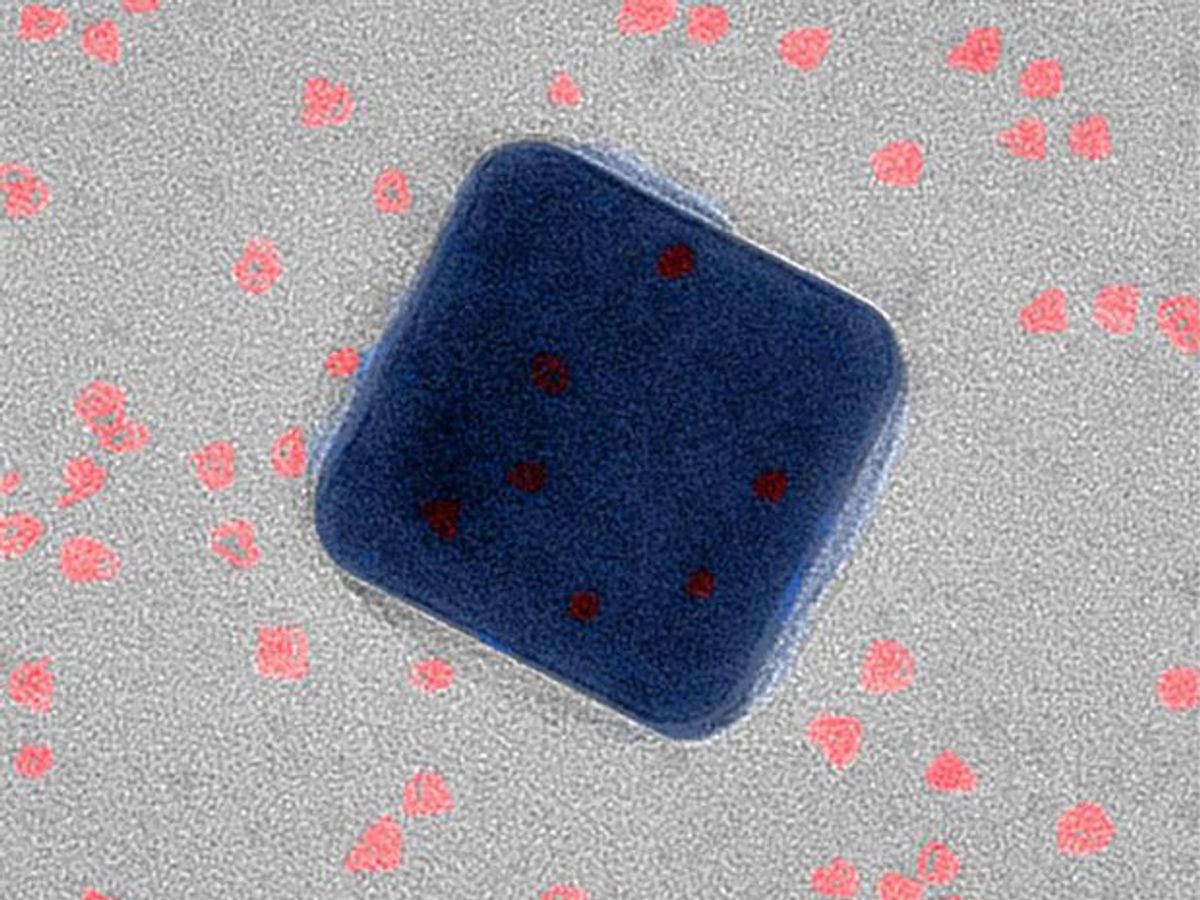Computers could get a huge speed boost by using photons instead of electrons to process and transmit data. Researchers have taken a big step toward that goal by designing a light-emitting device that can flip on and off 90 billion times per second. The record-breaking speed of the new device, based on quantum dots, could become the basis for faster computing at the speed of light.
Duke University researchers engineered the quantum dots—tiny spheres of semiconducting metal about six nanometers in diameter—as part of a “spontaneous emission” light source that can be modulated at speeds of 90 GHz. That’s much faster than the fastest laser diodes which switch on and off at speeds of 25 to 50 GHz. Such a breakthrough could pave the way for new optoelectronic devices that use light to transmit data between traditional electronic microchips.
“To achieve such fast spontaneous emission, we engineered a plasmonic (metal) structure that has a well-controlled gap of just a few nanometers into which the quantum dots could be embedded,” said Maiken Mikkelsen, an assistant professor of electrical and computer engineering and physics at Duke University.
A plasmonic structure takes advantage of how light can excite electrons on the surface of metals. The phenomenon creates intense electromagnetic fields that can effectively make light emitters, such as quantum dots, emit light much faster. Mikkelsen and her colleagues reported on their design in a paper published in the July 27 issue of the journal Nature Communications.
The researchers took inspiration from the design of radio-frequency antennas to create tiny “plasmonic nanopatch antennas” that could boost the rate at which quantum dots emitted light. The design consists of silver nanocubes and a thin gold film layer separated by a gap. That tiny gap contains a spread of quantum dots sandwiched between the nanocubes and gold layer.
“This structure is very reproducible and easy to build, and does not rely on slow and expensive nanofabrication techniques,” said Thang Hoang, a postdoctoral researcher in Mikkelsen’s Duke University lab.
When the team aimed a laser at the 75-nm wide silver nanocubes to excite free electrons in the metal, the subsequent energy remained trapped on the cubes’ surfaces and created an electromagnetic field that could excite the quantum dots. Result: the spontaneous emission rate (rate at which the excited quantum dots gave off energy) jumped by 880 times, the total fluorescence intensity (brightness) by 2300 times.
The increased spontaneous emission rate of quantum dots makes them a much more promising candidate for future optoelectronic devices. They’re ideal to work with because their crystalline structure enables a bright, stable emission that can even change color based on the overall size of the quantum dots. Their coating of organic molecules also allows them to be deposited like a coating on other materials at low temperatures, Mikkelsen said.
Even without the speed boost, quantum dots already had an advantage over lasers in building the future of optical communication and computing. That’s because lasers tend to be too bulky and use too much energy for efficient integration with computer chips.
“The most near term application is not for optical computing but for optical communication at short distances; for example, between processor cores,” Mikkelsen explained. “Short distance communications really need good, cheap, and energy-efficient light sources that can be made directly on chip, which is not possible with lasers.”
Researchers could also eventually turn their antenna into an ultrafast, single-photon source that could enable secure quantum communications. They have begun experimenting with trying to place a single quantum dot between a silver nanocube and the gold layer.
But quantum dots aren’t ready for prime time in optical communication just yet. Next up, the Duke University researchers want to excite the quantum dots with electricity rather than a laser; a crucial stepping stone toward building electrically-pumped devices that can be modulated faster than 100 GHz. To achieve that goal, they hope to use a new class of 2-D semiconductors based on materials such as graphene that could operate at incredibly low power levels.
“The next important step is to utilize the speed-up in emission rate that we demonstrated here to build an ultrafast and super bright light-emitting diode,” said Gleb Akselrod, a postdoctoral researcher in Mikkelsen’s Duke University lab.
Jeremy Hsu has been working as a science and technology journalist in New York City since 2008. He has written on subjects as diverse as supercomputing and wearable electronics for IEEE Spectrum. When he’s not trying to wrap his head around the latest quantum computing news for Spectrum, he also contributes to a variety of publications such as Scientific American, Discover, Popular Science, and others. He is a graduate of New York University’s Science, Health & Environmental Reporting Program.



